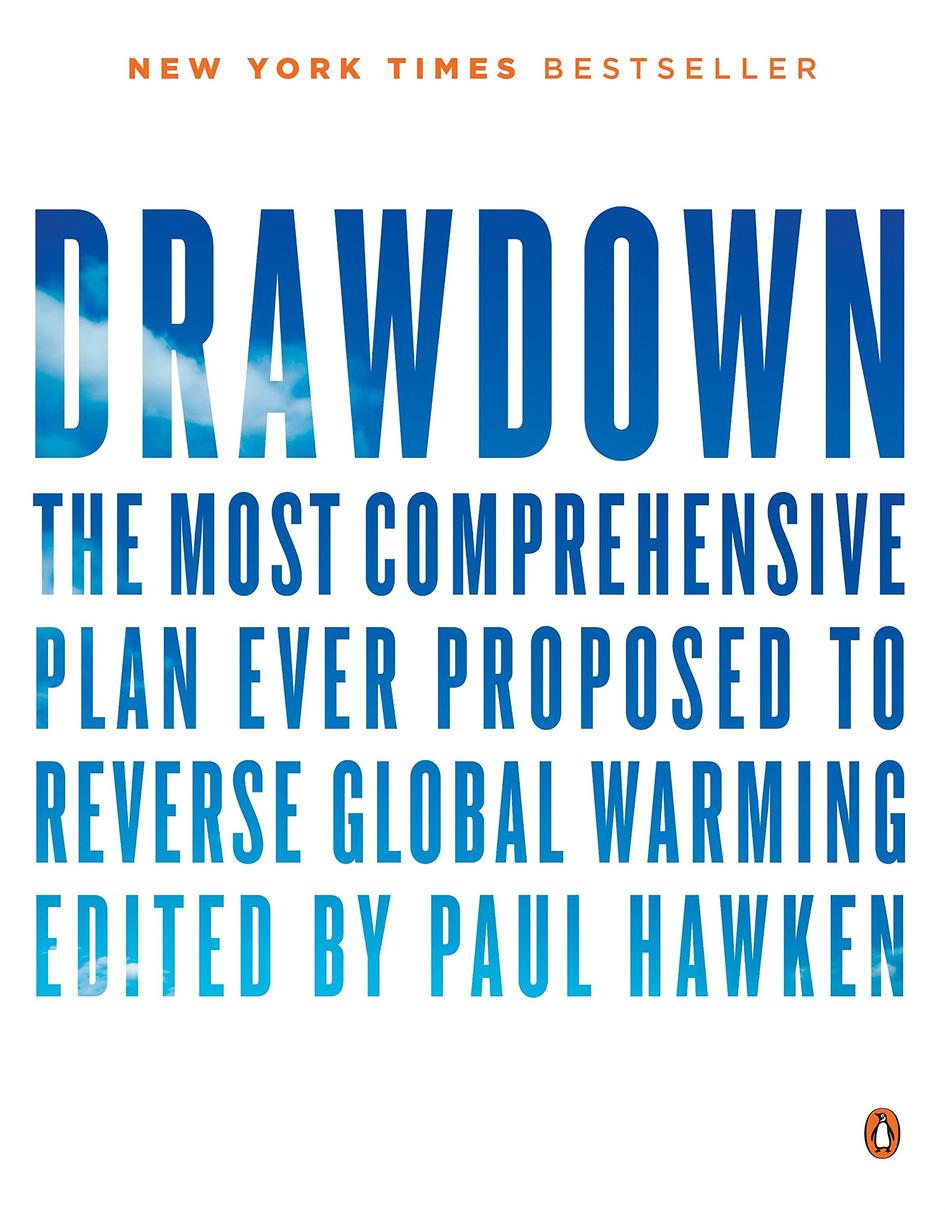The following series of notes are excerpts of the book, “Drawdown: the most comprehensive plan ever proposed to reverse global warming”. It is edited by Paul Hawken.
I strongly recommend you buy the book at Amazon and read it cover to cover like I have. It provides some answers to complex questions about climate change and offers some hope. It offers a path to achieve that point where carbon dioxide is reducing in the atmosphere. In lockdown I have been reading. Caitlyn in our office recommended this book and it has been a revelation and I would like to share it with you.
It helps answer some of those questions that I ask myself. I have learnt quite a lot but realise there is so much more to learn and it is so hard to comprehend the sizes tasks magnitude of what we have to do to try and repair this world. To survive. There are lots of opinions but this book helped with questions like: (1) As an architect what global effect might some of the things we are working on have (2) How does that compare with some other thing completely, i.e. if we build a carbon neutral building, then onto the world doing it, how does that compare to air travel.
This book shows 100 well researched things that are happening or can happen that show how we can make it work. Not the "it’s all too late and we can’t do anything", I’m not saying it is easy or will necessarily work but at least we can spend our personal and office time energy and passion trying.
I have written an excerpt of each of the top 10 items that can reduce carbon emissions. I found it a surprising order and I would never have got it. The fact that number 1 is refrigeration adds importance to my role as an architect, and that I should talk about it in every project meeting! The following are excerpts from the book.
- Ewan Brown, Director, Tennent Brown Architects
Drawdown
The climate change narrative has become a doom and gloom story, causing people to experience denial, anger, or resignation. At times I have been one of those people.
Thanks to Drawdown, I have a different perspective. Paul Hawken and his colleagues have researched and modelled the 100 most substantive ways we can reverse global warming. Together these solutions not only slow climate change, they can reverse it...
Drawdown shows us what we can do. Because of that I think this is the single most important book ever written about climate change. Drawdown has helped restore my faith in the future, and in the capacity of human beings to solve incredible challenges.
- Dr Jonathon Foley, p. ix.
Origins
In atmospheric terms, drawdown is that point in time at which greenhouse gases peak and begin to decline on a year to year basis. The goal of the project is to measure and model 100 substantive solutions to determine how much we could accomplish within 3 decades.
The subtitle of the book - the most comprehensive plan ever proposed to reverse global warming - may sound brash. We have chosen that description because no detailed plan to reverse warming has been proposed... There are agreements, proposals on how to slow, cap and arrest emissions, and there are international commitments to prevent exceeding 2 degrees.
The UN’s IPCC has completed the most significant scientific study in the history of humankind. However there is as yet no road map that goes beyond slowing and stopping emissions. In conducting our research we found a plan, a blueprint that already exists in the world in the form of humanities collective wisdom...
Today the Drawdown fellows comprise 70 individuals from 22 countries...
We compiled literature reviews and devised detailed climate and financial models for each of the solutions. The analyses informing this book were then put through a 3 stage process including review by outside experts who evaluated the inputs, sources and calculations. We brought together a 120 person advisory board, a prominent and diverse community of geologists, engineers, agronomists, politicians, writers, climatologists, biologists, botanists, economists, financial analysts, architects and activists who reviewed and validated the text...
The overwhelming majority of solutions are no regrets solutions, initiatives we would want to achieve regardless of their ultimate impact on emissions and climate. We rank solutions based on the total amount of greenhouse gases they can potentially avoid or remove from the atmosphere. The rankings are global...
Ranking of solutions
We rank solutions based on the total amount of greenhouse gases they can potentially remove from the atmosphere. The rankings are global...
Gigatonnes
Each solution in Drawdown reduces greenhouse gases by avoiding emissions and or by sequestering carbon dioxide already in the atmosphere... but what is a gigatonne? To appreciate its magnitude imagine 400,000 Olympic sized swimming pools. That is about a billion metric tonnes of water, or 1 gigatonne. Now multiply that by 36, yielding 14,400 pools. 36 gigatonnes is the amount of carbon dioxide emitted in 2016...
Total cost and net savings
The total cost of each solution in this book is the amount needed to purchase, install, and operate it over 30 years. By comparing this to what we typically would spend on food, fuel, heating and cooling for our homes etc. we determined the net cost or savings from investing in a given solution. We err on the conservative side...
Even taking a conservative approach, however, the solutions tend to offer an overwhelming net savings. For some solutions though the costs and savings are incalculable, as in the cost to save a particular rainforest or support girls’ education...
To learn more
The solutions presented in Drawdown are only the summary of the full research conducted to support our findings... We also provide a full description of our research at drawdown.org -how all the data were generated, sources used, assumptions made...
- Chad Frischmann, pp. x-xiv.
#ProjectDrawdown
